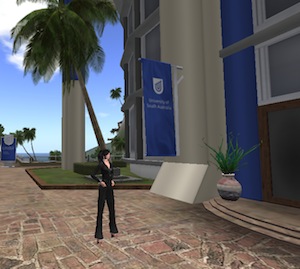 Denise Wood (SL: Denlee Wobbit) is Senior Lecturer in the Bachelor of Media Arts program at the University of South Australia and the Teaching and Portfolio Leader of the School of Communication, International Studies and Languages. As one of Australia’s many educators who are utilising virtual environments in their roles, I was aware of Denise’s work in regards to disabilities and accessibility, so I asked her to have a chat about her efforts to date in Second Life.
Denise Wood (SL: Denlee Wobbit) is Senior Lecturer in the Bachelor of Media Arts program at the University of South Australia and the Teaching and Portfolio Leader of the School of Communication, International Studies and Languages. As one of Australia’s many educators who are utilising virtual environments in their roles, I was aware of Denise’s work in regards to disabilities and accessibility, so I asked her to have a chat about her efforts to date in Second Life.
As you’ll see below, that discussion covered a number of areas in detail. It’s yet another example of the promising work being done by Australian educators. I was particularly struck by the growing level of collaboration between institutions, which is imperative for ongoing success.
If you’d like to see the University of South Australia’s Second Life presence for yourself, here’s where to go.
Lowell: To start off, can you give a little history of how you got involved with Second Life at first?
Denlee: Sure – We initially became involved out of interest in the possibilities that virtual worlds offer for experiential learning. As an educator in the field of media arts, I was interested in exploring possibilities for engaging students in problem solving activities within a flexible environment that facilitates collaborative learning activities. So we applied for a University of South Australia (UniSA) Teaching and Learning Grant initially to fund the purchase of the island and to maintain it for a year while we conducted trials with some identified courses. That grant was successful and that is how we initially funded purchase and upkeep of the UniSA island.
Once I was teaching in Second Life (SL) I became concerned at the issues for students with disabilities. As someone with many years experience working with people who have disabilities and as an educator teaching in a University that prides itself on access and equity that was a concern. So we applied to the Australian Learning and Teaching Council (ALTC) for a grant to develop an open source environment to enhance accessibility in virtual worlds
Lowell: So how much experience with SL did you have prior to making the grant application i.e. was there a key event or experience that ‘turned the light on’ so to speak?
Denlee: I had very little experience in SL prior to applying for the grant. Most of my knowledge was based initially on review of the literature. I spent some time exploring SL prior to applying – and enrolled in building classes and so on, and of course visited education sims, but most came from reading case studies and my own knowledge of simulated learning environments.
Lowell: So how were those first days and weeks in SL for you – did you find it an incredible eye-opener for its opportunities or did it seem a natural extension for you on previous work you’d done?
Denlee: It was a wonderful experience – naturally a little overwhelming initially. Having applied for the grant and received the funding close to the end of the academic year was rather fortunate as it meant that I was able to spend many, many hours over the summer break immersed in SL – I was in SL every day – 7 days a week for about 6 weeks and really did become part of the community through that process. Knowing that we would be trialling courses the next semester was also great motivation to spend the time and make the commitment. I knew I would need to feel very confident myself before attempting to teach students in this environment. And attending building classes gave me the skills but also ideas about what works and what doesn’t in teaching in this context.
Lowell: Let’s talk about the first courses you taught involving SL – what were the educational objectives you were looking to achieve?
Denlee: I trialled two initially. One was a course focusing on games design so SL seemed a perfect environment for achieving the learning objectives relating to that course, which focused on problem solving, team work, collaboration and communication. Students (5 or 6 per team including external students) created immersive games using holodecks on sky platforms.
The other course was one in which students create online portfolios to market their design skills. They created Websites and built complementary portfolios (kiosks) in SL that linked to their websites. The aim was for the students to understand the changing nature of designing for electronic media and the relationship between Web design and the future potential of virtual worlds as an extension of that. What surprised me was that students at first seemed to enjoy the activities and they did some fabulous work, but they were not as positive about the learning experience as we had anticipated.
Lowell: What were the issues they seemed to be unhappy with?
Denlee: Some of the issues seemed to be about the platform (buggy issues and so on) but that didn’t explain it all. And when we really analysed the evaluation data it appeared to be related to their inability to see the connection between the learning activities and their future career aspirations. Many said they would prefer to have created the game in another platform like Flash or Director or another gaming platform. And some of the web design students said they couldn’t see the value as they didn’t believe the future predictions that 3D virtual worlds would become more popular for businesses and marketing.
Lowell: Did they perhaps see SL as less graphically appealing, so more like ‘work’ than play?
 Denlee: Actually it was the reverse. Some saw it as inappropriate because it was too much like play – almost as if they had preconceived ideas about what is a valid or authentic learning environment.
Denlee: Actually it was the reverse. Some saw it as inappropriate because it was too much like play – almost as if they had preconceived ideas about what is a valid or authentic learning environment.
Lowell: Ok that’s interesting! So are those courses still being taught in that context – has SL become part of the core work done given the mixed feedback?
Denlee: Well after that experience I was unsure of how to next proceed. But I decided to try again with a different course this semester, only this time I gave students the option of choosing to work with a “real client†in actual life or a client in SL. So in this course, students learn how to create accessible Web sites that are W3C compliant. They are required to work with a client organisation and either redesign an existing website or create a new site that meets very high standards in accessible design. Out of the 20 students in this course, 7 chose to work in SL and that course has proved very successful. The seven students meet with their clients in SL every week and attend a tutorial I facilitate in SL every Saturday. They are also working with disability groups in SL. And some of the tutes are conducted with Gentle Heron from Virtual Ability Island.
The difference – and this is the eye opener for me about virtual worlds – is that they are not focusing on the platform but using it as a conduit to engage on “real†work with “real†clients. What is particularly interesting is that in the previous trials we put enormous effort into running tutorials on how to use SL and we had mentors to help the students, yet they still complained it was hard to navigate and so on. However, in this class the students have had no training in SL at all – I left them to their own devices. They have taught themselves and helped each other. This has shown me that students will engage in learning activities when they are focusing on “real†world issues and not on the technology. The previous courses focused a lot on building in SL, and it appears that perhaps the students would have been more engaged in those courses if they had undertaken projects for clients and not focused so much on learning to build and script. In other words, problem solving can be more effective when students are focused on the project not the skills required to achieve the overall aim of the project.
Lowell: So let’s move over to your area of interest, accessibility. What specifically led you to that research area?
Denlee: I worked in the disability sector for many years prior to being appointed as an academic at UniSA. I was a researcher for an organisation that provides services for children with disabilities and then moved on and established a Govt funded organisation providing training in multimedia for young adults with disabilities. We provided contract work on multimedia projects to graduates of that program. While working in the field I was also actively involved with other organisations providing training in accessible web design. So when I came to UniSA it was only logical that I would want to redesign courses so that our students (future designers) would be equally skilled and committed to accessible Web design and I was able to progress my research at the same time.
Lowell: So did SL seem a natural progression for the work you;d been doing in that area?
Denlee: Yes, very much so. Many of the same principles apply – but we do need more creative solutions to tackle some of the challenges imposed by such highly graphical and multimedia rich environments. Once we received the ALTC funding, we embarked on ethnographic research with people in SL who identify as disabled. I leased an apartment on the Wheelies SIM and conducted many interviews from there. I was interested in identifying the benefits experienced by people with disabilities in virtual worlds as well as the accessibility challenges.
Lowell: Virtual environments are often touted as a boon for individuals with disabilities that may restrict some real world experiences. What’s the more objective view on the challenges and opportunities?
Denlee: The virtual communities provide a wonderful place for people with disabilities to socialise, gain information and for advocacy. The virtual environment also provides a place for people to experiment with identity and so they can choose to represent themselves as someone with a disability or not. It’s their choice – and those who choose not to appear “disabled†find they are more likely to be accepted for who they are, not judged by appearances. For those who are not able to get out of the house much, environments like SL provide a wonderful means for meeting others and also for providing the opportunity foe people in that situation to contribute to the virtual communities in SL. And what really fascinates me are the ways in which these communities have worked together to create their own solutions to some of the challenges.
Lowell: And on the other side of the coin, what are the accessibility challenges that stand out?
Denlee: Obviously SL is a very visual environment – so those with significant visual impairments find it difficult or impossible to navigate. Those who use screen readers for example, can’t access SL without assistive technologies in world as objects and inventory, and locations are not exposed to a screen reader. Then of course most multimedia is not captioned in SL. As voice has become more popular, the environment has become less accessible for those with hearing impairments when they are communicating with residents using voice and not text chat.
Lowell: So with these shortcomings, is there significant momentum toward solutions? And if so, is it primarily community driven or are Linden Lab actively driving some enhancements?
Denlee: Linden Lab has started to show greater interest of late because of the initiatives taken by residents themselves. A good example was the awareness raised by the Helen Keller Day event hosted by Virtual Helping Hands.
Lowell: What are some of the community driven activities that have inspired you?
Denlee: Well, groups like Virtual Ability Inc (VAI) who set up Virtual Ability Island, and of course Virtual Helping Hands and their virtual guide dog you see here. Wheelies and Cape Able (now owned by VAI) and the Health Support Coalition – all these groups show the power that comes when people who share common goals work together on solutions. What we are doing is building on that knowledge using the funding from ALTC to design an open source client that is accessible and can be used with SL and OpenSim. So we are working with these groups to ensure what we create is suitable and informed by their significant knowledge.
Lowell: Ok so how’s that progressing? Can you give a synopsis of key groups involved in its development?
Denlee: We are working with all the groups really – Virtual Ability, Virtual Helping Hands and members of Wheelies. Our contracted programmer is a member of VHH and we meet regularly with others from VHH as we proceed with design and development. We are also working with ReactionGrid, which is based on OpenSim, and they have provided us with four sims for our development work. They are very supportive of the importance of accessibility in virtual worlds.
Lowell: What does OpenSim offer that appeals in lieu of SL?
Denlee: The fact that it is open source. We can work with the open source community on solutions. Everything we do contributes to that open source community as well. We can work on the open source client when it comes to SL, but not at the server level, whereas we can tackle both with OpenSim. But, we are very mindful of the very large following of SL so we want to work at both levels since SL is still a wonderful conduit for linking people together given that large population base. The ideal solution is what I believe Linden Lab always envisaged, a grid with various virtual worlds linked together.
Lowell: Onto UniSA’s presence here – can you give an overview of what’s offered here and what any future plans are?
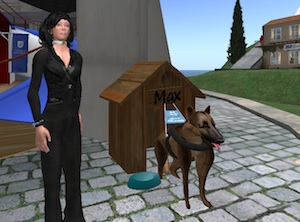 Denlee: We will no doubt continue to maintain our UniSA island here – we are planning to trial using our island to facilitate career building – running careers fairs and so on. We are also undertaking research in the area of performing arts and hybrid performance. Intermediality – where actors on a “real life†stage perform with actors in SL.
Denlee: We will no doubt continue to maintain our UniSA island here – we are planning to trial using our island to facilitate career building – running careers fairs and so on. We are also undertaking research in the area of performing arts and hybrid performance. Intermediality – where actors on a “real life†stage perform with actors in SL.
Lowell: Is the UniSA presence a cross-faculty collaboration or predominantly your faculty?
Denlee: UniSA island is managed by me, but there are several other faculties (we call them Divisions), which plan to trial courses on our island including education and health sciences, and our computer science school also has a presence on SL. We are also doing collaborative work with many other universities. Our ALTC project is a collaboration involving UniSA as lead institution with Monash University, Edith Cowan University, the University of Sydney, RMIT and Flinders University, as well as the University of Sheffield in the UK. And we are also in communication with other Australian universities which have ALTC grants relating to this area.
Lowell: What’s your perspective on the Australian research momentum in relation to virtual worlds – are we leaders or followers?
Denlee: I think Australia is certainly undertaking significant research in this space – so definitely not just following the lead of international universities. We have a very strong presence in virtual worlds in both teaching and learning, and innovative research. Australia is certainly an important international player and making a significant contribution to the field. I think we will see that activity escalate in a short space of time as so many universities are now collaborating and sharing their expertise across many diverse disciplinary areas. A good example of the level of this activity is evident each year at the annual ASCILITE conference, which has attracted a rapidly increasing number of high quality research papers focusing on teaching and learning in virtual worlds.
Lowell: Do you feel there are solid collaborative structures in place to support the growing interest in a way that will be effective?
Denlee: We are seeing that happen I think at a number of levels. Firstly, the ALTC has funded quite a few projects relating to teaching and learning in virtual worlds so this is recognition of the importance of these environments. The ALTC requires universities to collaborate and so these projects bring together teams from universities across Australia. They also provide a mechanism for bringing projects together – so all that bodes very well for supporting collaboration. Also, we have seen a growth in interest in the informal networks recently established and AARNET is playing a major role in supporting collaboration among universities – it is well positioned to do so as the major internet service provider to universities across Australia. Education.au is becoming very active in this space as well and has shown great interest in working collaboratively with us.
Lowell: One area that seems to have a long way to go is public-private partnerships, including research. Do you think Australian business is being too hesitant or are there some structural issues more broadly that make collaborations like that difficult?
Denlee: Many of us are looking at the opportunities in that space and one obvious funding source that can assist research in this area is the Australian Research Council (ARC) through their linkage funding scheme. While the ARC does not fund teaching and learning projects, there is considerable interest from academics in undertaking high quality research relating to virtual worlds in partnership with industry groups, and I think you will see increasing uptake of research in this area in the foreseeable future.
Lowell: A final question. What are your plans over the coming 12-18 months?
Denlee: We will be continuing our research into accessibility solutions – that project is funded until the end of 2010. We will also be trialling careers fairs and industry engagement in the coming few months. I will be continuing to teach in SL focusing more on using SL as a platform for facilitating interaction between my students and clients via SL. We are furthering our research into mixed media performance in virtual worlds and we are currently working on a pilot project with the University of Adelaide focusing on entrepreneurship training in virtual worlds. I am working with Professor Noel Lindsay from the Entrepreneurship, Commercialisation and Innovation Centre at the University of Adelaide on that project.
Lowell: Any last words?
Denlee: I guess for me the most powerful thing about a virtual world like SL is that it provides a medium by which researchers, academics and students can come together to collaborate, undertake research and also for providing experiential learning opportunities for students within a global platform. The other significant aspect of this environment is the flexibility it affords for engaging people who might otherwise not be able to meet, whether due to disability, geographical location or other circumstances.
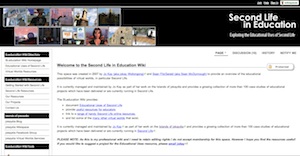 I’ve had the pleasure of having a chat to Jokay Wollongong in RL on one occasion, and hope to again in the future. I was more than aware of her work in Second Life prior to that catch-up, but only then did I realise her passion for the work she does. Sure, it’s part of making a living but it’s also a lot more than that – she is fundamentally driven by seeing the outcomes virtual environments can provide in education. In that, she’s no different to hundreds of other educators in Second Life.
I’ve had the pleasure of having a chat to Jokay Wollongong in RL on one occasion, and hope to again in the future. I was more than aware of her work in Second Life prior to that catch-up, but only then did I realise her passion for the work she does. Sure, it’s part of making a living but it’s also a lot more than that – she is fundamentally driven by seeing the outcomes virtual environments can provide in education. In that, she’s no different to hundreds of other educators in Second Life.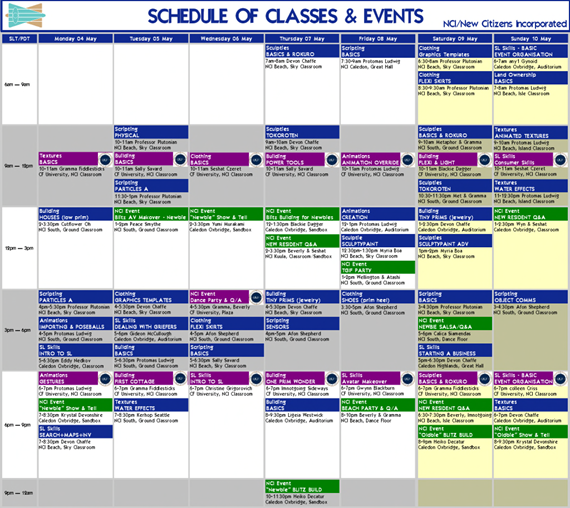
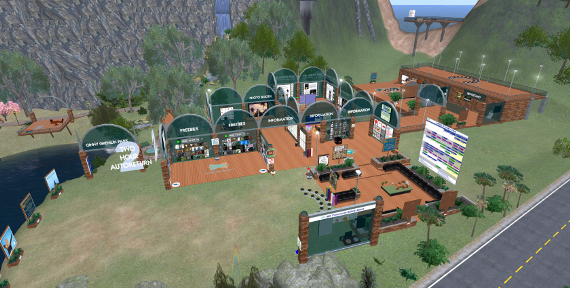
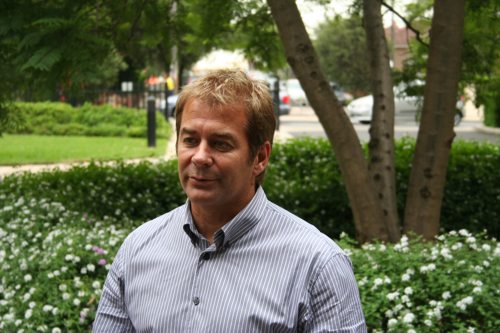
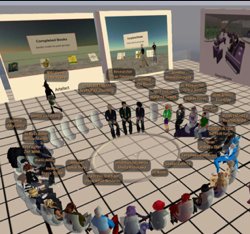
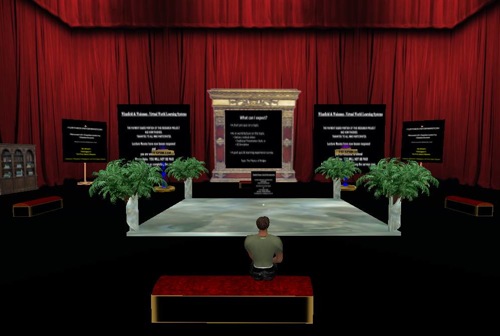
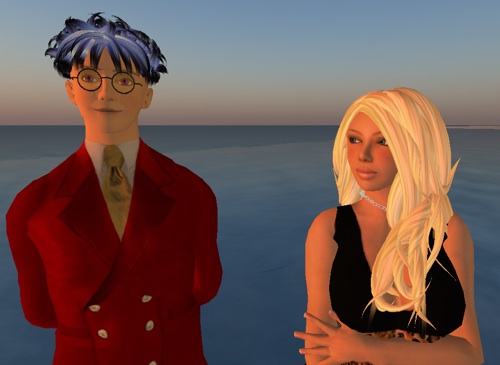
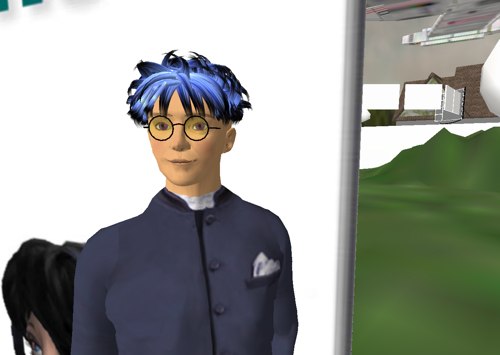

Recent Comments